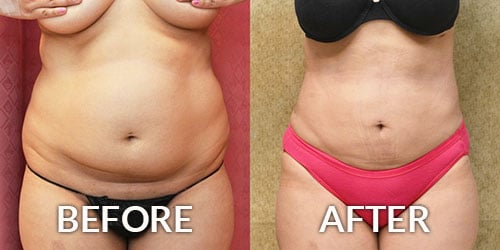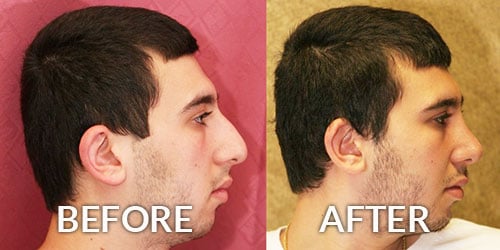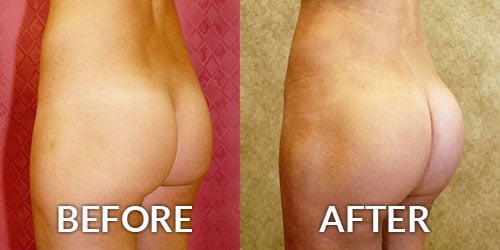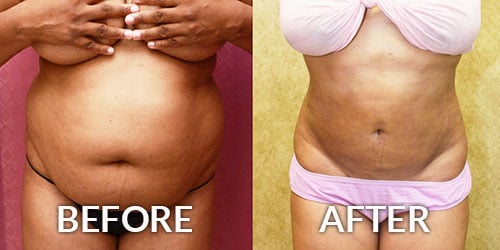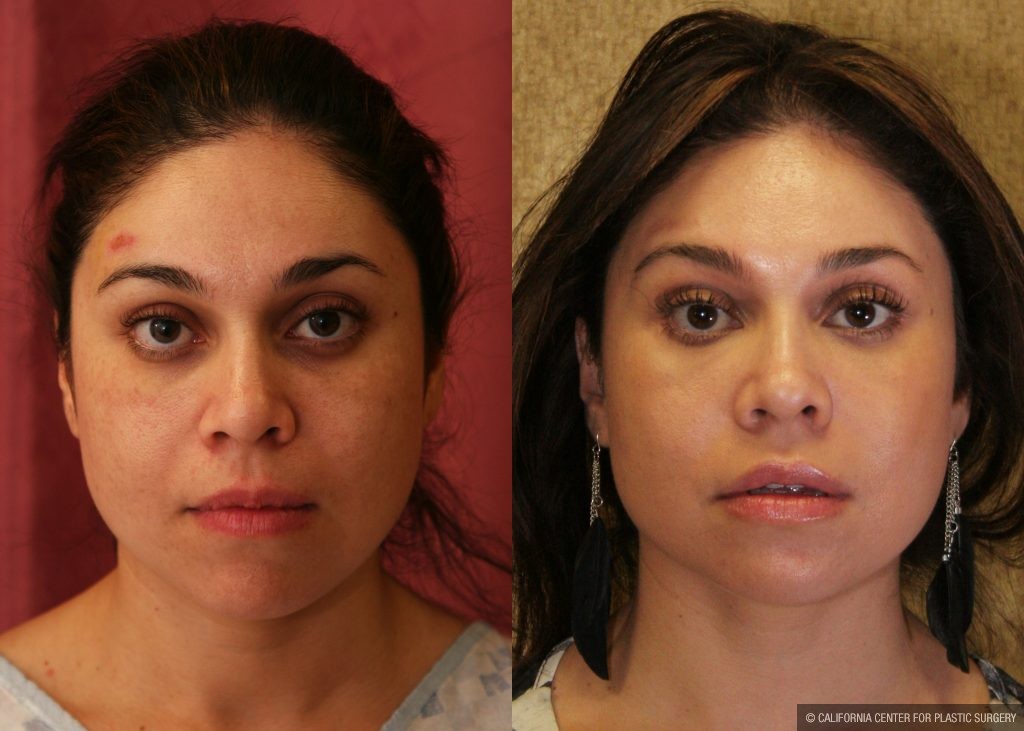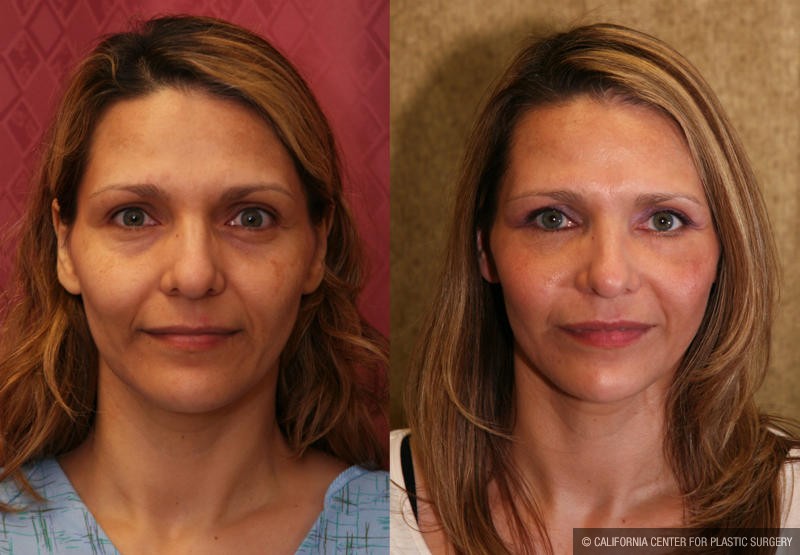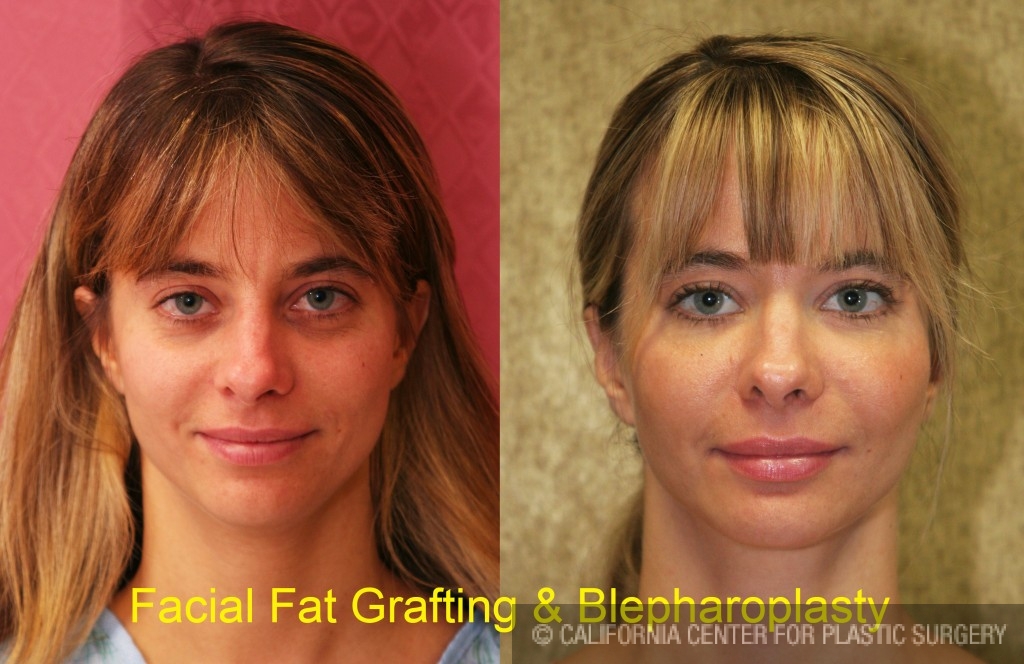Facial Fat Grafting
Consultations offered at our three convenient locations in Encino, Glendale and Bakersfield
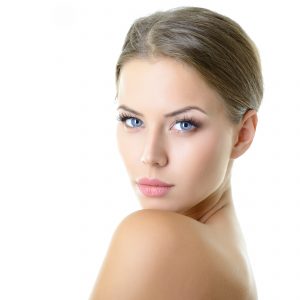 In Beverly Hills and Los Angeles facial plastic surgery is rapidly evolving as women are choosing cosmetic surgery at a younger age. The goal of today’s California woman is to maintain their youthful appearance by undergoing smaller and less invasive facial plastic surgery procedures..
In Beverly Hills and Los Angeles facial plastic surgery is rapidly evolving as women are choosing cosmetic surgery at a younger age. The goal of today’s California woman is to maintain their youthful appearance by undergoing smaller and less invasive facial plastic surgery procedures..
Facial fat grafting is one such cosmetic surgery procedure which helps restore youthful facial fullness by filling the deep nasolabial folds, lower eyelid hollows, forehead wrinkles, and frown lines.
Contents
- 1 What is Facial Fat Transfer?
- 2 Benefits
- 3 Fat Transfer vs Injectable Fillers
- 4 Facelift vs. Micro-Fat grafting of the face
- 5 Before and After Photos
- 6 Fat Grafting Techniques
- 7 Facial structural micro-fat grafting- a new approach to facial rejuvenation
- 8 Ideal Candidate
- 9 Consultation
- 10 Preparation
- 11 The Facial Fat Transfer Process
- 12 Recovery
- 13 Provided Results
What is Facial Fat Transfer?
As a person ages, facial features naturally and gradually lose volume, causing certain parts of the face to look more sunken, thinner, or sagging. This can create an appearance of hollow cheeks and exhausted eyes, making a person look tired or even older than they truly are. A facial fat transfer is a cosmetic operation intended to rejuvenate the facial features affected by this aging process. When you come to Dr. Younai for a facial fat transfer, he takes undesired fat tissue from some areas of the body and re-injects it into others in order to fill out shrunken regions and give the face a smoother, softer, younger appearance.
 A facial fat transfer can dramatically reverse the signs of aging, such as deepening laugh lines, bags under the eyes, or wrinkles around the mouth. The process can also be called facial fat grafting. This procedure is combined with liposuction, the method used to remove fat from other areas of the body (especially when diet and exercise have proven ineffective in doing so).
A facial fat transfer can dramatically reverse the signs of aging, such as deepening laugh lines, bags under the eyes, or wrinkles around the mouth. The process can also be called facial fat grafting. This procedure is combined with liposuction, the method used to remove fat from other areas of the body (especially when diet and exercise have proven ineffective in doing so).
Dr. Younai takes goes great lengths to ensure that his patients never experience results that make their face look too puffy or “over-stuffed.” This happens if a less-experienced surgeon injects fat tissue with abnormal distribution, rather than following anatomical proportions. Fortunately, Dr. Younai is highly certified and trained to perform facial fat transfers to absolute patient satisfaction.
Benefits
A facial fat transfer addresses problems such as sunken eyes, hollow cheeks and too-prominent cheekbones, sharp chins, and jawlines, or an overall “flat” look to the face. When fat is transferred from around the body and into the face, it can turn back the clock of a patient’s appearance with long-lasting and striking results.
- Rejuvenated Facial Features — The aging process wears down the face over the years, as collagen and fat is eliminated from the body. By adding fat back under aged skin, this process is reversed and the skin and underlying facial tissues can become more expressive.
- Restored Youthful Appearance — A healthy face is often indicated by fuller cheeks, firm skin, and thick lips. When a facial fat transfer occurs, all of these can be improved, taking decades off of a person’s look.
- Reduced Wrinkles and Lines — When the facial features are filled out by injected fat cells, any lines or wrinkles that have been formed can be visibly reduced in depth and length. This contributes to the overall younger, healthier look of a face.
- Confidence Boost — When a person sees their face getting older, it can be mentally and emotionally stressful and can hurt one’s confidence or self-esteem. By undergoing a facial fat transfer, a patient’s body image can undergo a huge boost, emboldening them to re-engage in social scenes and other activities they may have begun to avoid because of image-based depression or anxiety.
- Improved Contours — The injected fat in a facial fat transfer can reshape the face entirely, sculpting the visage to be more aesthetically pleasing.
Fat Transfer vs Injectable Fillers
The main difference between a facial fat transfer and other injectable fillers (such as dermal fillers) is that a facial fat transfer uses the patient’s own fat cells. Other procedures introduce foreign materials into the body, possibly causing an allergic response and increasing the risk of complications. If a patient wants to avoid synthetic materials and enjoy much longer-lasting results, a facial fat transfer is the preferred way to go.
Facelift vs. Micro-Fat grafting of the face
Fat grafting is rather a simple procedure with minimal discomfort and recovery. While simple in theory, it is rather a powerful tool which delivers significant facial rejuvenation while maintaining the natural appearance of the face and eyes. Unlike a facelift, facial and eyelid fat injections, do not give a “stretched-out or mask-like” facial appearance. That is precisely why facial micro-fat grafting is utilized as an adjunct to facelift, forehead lift, and mid-facelift, in order to deliver a more natural look. While older facial rejuvenation techniques such as a standard facelift focus on reversing the effects of gravity, today’s combined structural fat injections and facelift techniques that are performed throughout Beverly Hills also focus on restoring facial volume and fullness that is present at youth.
Before and After Photos
Fat Grafting Techniques
Fat grafting of the eyelids and face can be performed under sedation or general anesthesia depending on the extent of surgery. The technique of facial fat grafting is as followed. First, unwanted abdominal or thigh fat is harvested with liposuction. Then this harvested fat is cleaned and processed in order to increase its survivability. Finally, this processed fat is carefully injected into the deep and superficial planes of the face and eyelids. This is where the skills of an expert Board Certified Plastic Surgeon comes into play.
Facial structural micro-fat grafting- a new approach to facial rejuvenation
Micro-fat grafting of the eyelids fills the hollows while smoothening some of the fine lines, shallow furrows, and grooves. It is often combined with blepharoplasty or eyelid tuck to remove excess eyelid skin folds.
Facial fat grafting of the nasolabial folds and the cheeks soften the facial lines while contouring the face and augmenting the cheeks to their youthful state. This can be combined with a mid-facelift, and/or blepharoplasty, or Genioplasty with cheek implants in order to rejuvenate the middle face of a woman who is still too young to have a facelift.
While many younger women often want fuller and sexier lips many older women overlook the fact that aging thins out the lips.
Restoring fullness to the lips is maybe one of the most overlooked steps in rejuvenating the aging face. Micro-fat grafting of the lips can bring back youth not only to the lips but also to the entire face.
Finally, the combination of all mentioned facial fat grafting procedures into a total re-contouring of the face is call “Structural facial fat grafting” which revives the cheeks, nasolabial folds, eyelids, foreheads, jawlines, and lips. It is not uncommon to combine structural fat grafting with other facial cosmetic surgery procedures.
Ideal Candidate
 When considering a patient for a facial fat transfer, Dr. Younai considers a handful of main qualifiers to determine if they’re a good fit. Primarily, he evaluates their current health and levels of fat deposits around the body. A patient must have enough body fat for some of it to be removed and injected into the face without impairing the function or contours of other areas of the body.
When considering a patient for a facial fat transfer, Dr. Younai considers a handful of main qualifiers to determine if they’re a good fit. Primarily, he evaluates their current health and levels of fat deposits around the body. A patient must have enough body fat for some of it to be removed and injected into the face without impairing the function or contours of other areas of the body.
Ideal candidates are also physically active, nonsmokers, and are not reliant on any heavy medications. They also follow a good nutritional protocol and have realistic expectations about the results of the facial fat transfer procedure.
If a candidate is concerned about submitting to a surgery for facial improvement, Dr. Younai can offer alternatives such as dermal fillers that can provide similar results. All other candidate considerations can be covered during an initial pre-op consultation.
Consultation
Dr. Younai always requires a pre-op consultation before anyone undergoes a facial fat transfer. During this time, Dr. Younai reviews the entire facial fat transfer procedure and helps patients set realistic expectations about what results they’ll experience, recovery time, pre-surgery preparation, health considerations, and more. He will review your full health and medical history, look at your current lifestyle, and determine if you may have any issues that could result in complications during the procedure.
It is important to understand the risks implicit in all cosmetic surgery operations, and you should be prepared to ask a variety of questions to allay any concerns or fears you might have about the procedure. Examples of these questions include:
- How much recovery time will be necessary?
- What happens if I’m displeased with the results?
- What are the main benefits of fat grafting?
- Will I require any pain medications after the surgery?
- How long until I can return to my usual daily routines?
You may also desire to bring in photographs of celebrities or other public figures you wish to resemble following the facial fat transfer, giving Dr. Younai a visual reference to work off of.
Preparation
The pre-op routine for a facial fat transfer is relatively simple and is similar to most other cosmetic surgeries. Dr. Younai will require you to stop smoking (if you currently do) at least two weeks prior to the surgery and refrain from resuming at least two weeks following. He may have you stop taking or reduce certain medications or hormone supplements to avoid issues such as excessive bleeding or conflicts with the anesthetic being used.
Fortunately, since there is no risk of being allergic to your own fat cells (since they are pulled from your own body), there is no need to worry about pre-procedure allergy testing.
The Facial Fat Transfer Process
The first part of the facial fat transfer process is applying either the local or general anesthesia.
The amount of anesthesia required will be determined by Dr. Younai, depending on the liposuction and amount of fat being transferred. The area which will receive the fat transfer is marked for surgeon reference, and liposuction is then performed to remove the necessary amount of fat for the upcoming injections.
Excess fat is often removed from the buttocks, abdomen, thighs, or jowls. The fat cells are then spun in a centrifuge to separate them from excess liquid, and then are placed in a hypodermic syringe for injection at the marked facial sites. The fat is then injected at the proper depth to achieve the desired contours, as will be discussed and reviewed during your consultation.
Recovery
The first night after surgery, it is quite common for patients to have a decent bit of swelling and bruising. While facial fat grafting is not a painful procedure it’s recovery depends on the extent of facial fat injection, since this determines the extent and duration of facial swelling. Most patients are able to be functional and work within a few days after facial fat grafting, but their face may experience swelling for a couple of weeks. Cool compresses can help with the swelling, and medication is often prescribed to deal with any ongoing discomfort.
Patients of facial fat transfers can engage in light activity and normal bathing the day after surgery, especially if they are consistent with their follow-up appointments with Dr. Younai to monitor their progress. The swelling and bruising should be significantly reduced within two weeks, during which the injected fat deposits will be inspected to determine how much of the repositioned tissue will remain in place for the long term. Final results of the surgery are often obscured to a large degree for two to three weeks as the face heals from the operation.
It is highly recommended that patients engage in frequent, even if short, walks, which can help the healing process.
Provided Results
Results from a facial fat transfer can dramatically vary from clinic to clinic and surgeon to surgeon. If a physician is inexperienced with the procedure, it can result in poor or undesirable results, such as overly puffy facial features, or asymmetric fat deposits after injection. Fortunately, Dr. Younai has extensive experience with facial fat transfers and a constantly increasing number of perfectly happy patients.
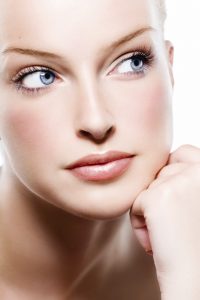 A patient who has a facial fat transfer can expect to see a fuller, firmer face, and a more youthful overall appearance. Wrinkles and lines around the face are often reduced. And the facial improvements can improve a person’s self-confidence and body image—especially if these have been in decline as they’ve continued to age. Contours of the face will be restored, adding greater aesthetic appeal.
A patient who has a facial fat transfer can expect to see a fuller, firmer face, and a more youthful overall appearance. Wrinkles and lines around the face are often reduced. And the facial improvements can improve a person’s self-confidence and body image—especially if these have been in decline as they’ve continued to age. Contours of the face will be restored, adding greater aesthetic appeal.
However, do note that, while a facial fat transfer takes fat cells from other areas of the body, it shouldn’t be considered as a potential weight loss method. Dr. Younai will use the least amount of fat transfer necessary to revitalize the face, keeping other body areas intact as much as possible. If you have any questions or concerns about what to expect from your facial fat transfer, definitely contact Dr. Younai’s office today to set up a consultation.

